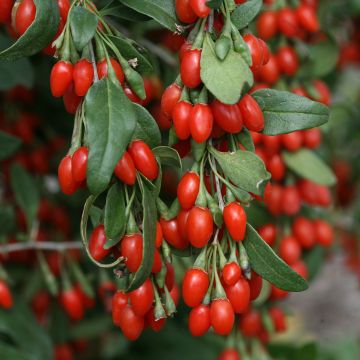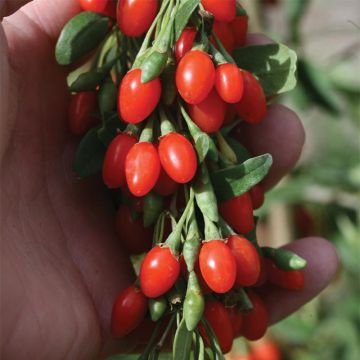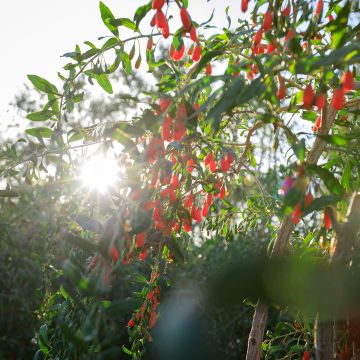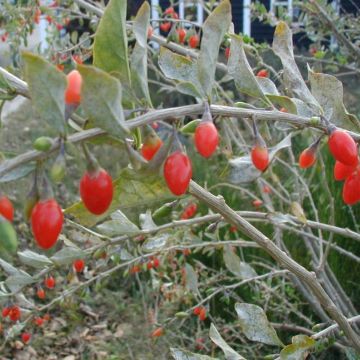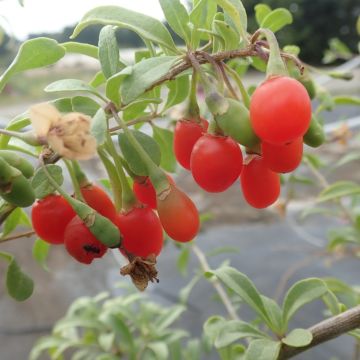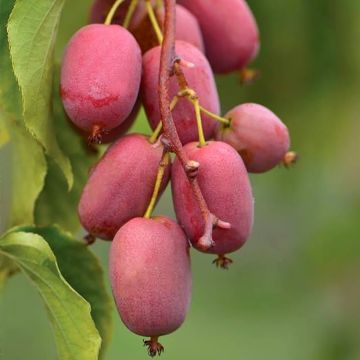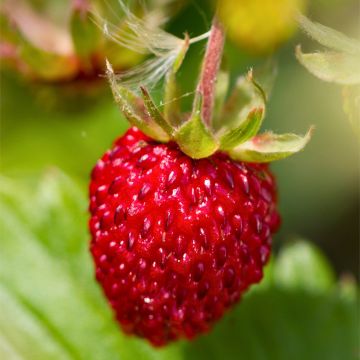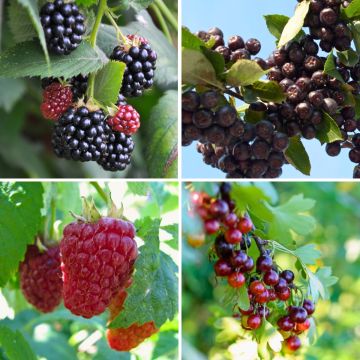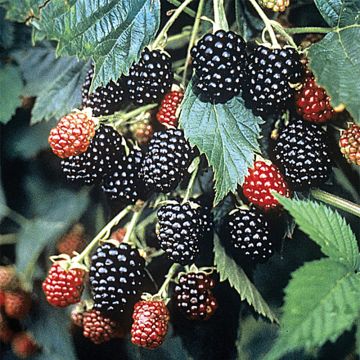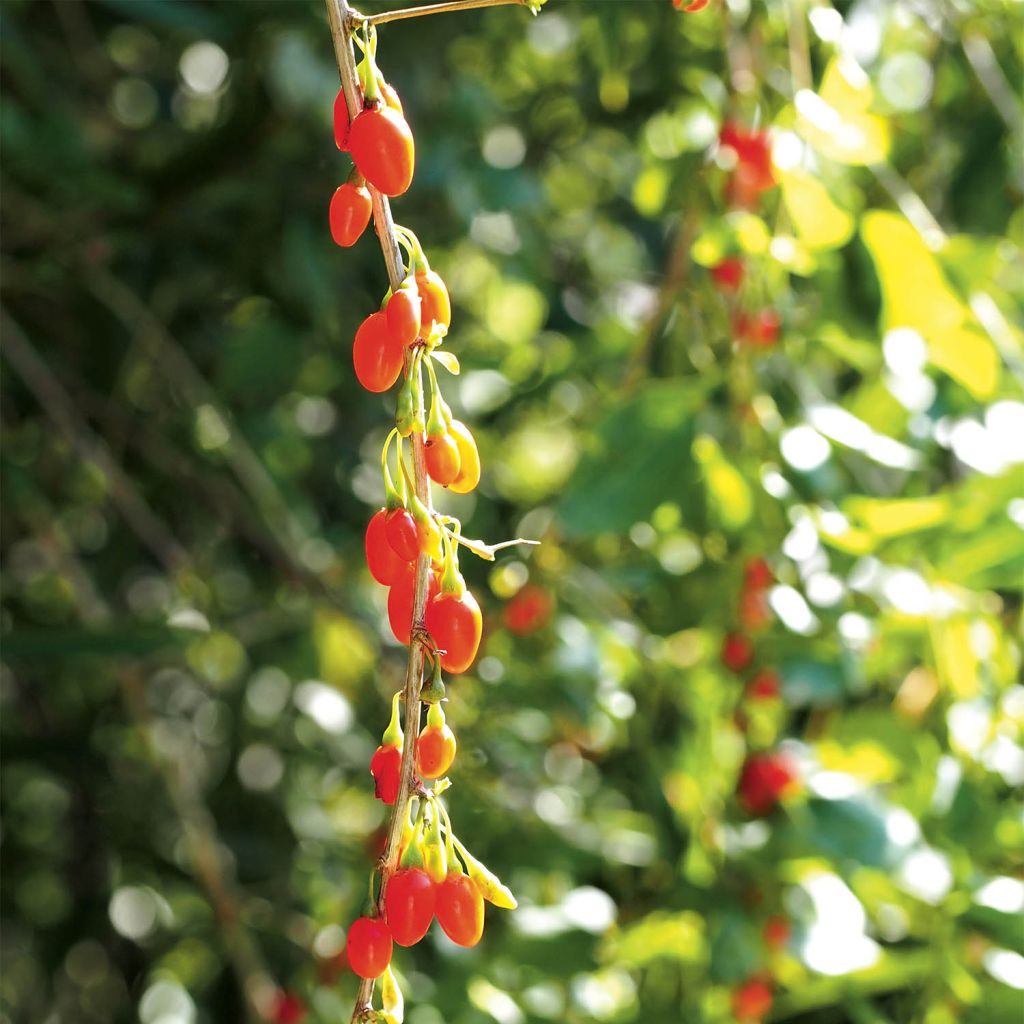

Lycium barbarum Instant Success
Lycium barbarum Instant Success
Lycium barbarum Instant Success®
Goji Berry, Wolfberry
10 out of 10
Georges T., 22/11/2019
Special offer!
Receive a €20 voucher for any order over €90 (excluding delivery costs, credit notes, and plastic-free options)!
1- Add your favorite plants to your cart.
2- Once you have reached €90, confirm your order (you can even choose the delivery date!).
3- As soon as your order is shipped, you will receive an email containing your voucher code, valid for 3 months (90 days).
Your voucher is unique and can only be used once, for any order with a minimum value of €20, excluding delivery costs.
Can be combined with other current offers, non-divisible and non-refundable.
Home or relay delivery (depending on size and destination)
Schedule delivery date,
and select date in basket
This plant carries a 6 months recovery warranty
More information
We guarantee the quality of our plants for a full growing cycle, and will replace at our expense any plant that fails to recover under normal climatic and planting conditions.

Description
Goji (Lycium barbarum) Instant Success® is a deciduous bush, dense, reaching a height and width of 1.50m (4ft 11in). Easy to grow, this variety offers small purple flowers followed by the formation of red-orange, sweet and tangy oval berries, from the first year after planting. These berries have nutritional properties known for millennia and are exceptionally rich in vitamins, minerals and antioxidants. Plant in autumn or spring, harvest in August.
Goji (Lycium barbarum) belongs to the Solanaceae family, just like tomatoes and potatoes. It is a deciduous bush with a controversial origin. It has long been considered to come from China, but recent research has shown that it could be native to the Mediterranean basin, which is evidenced by the species name 'barbarum', Barbaria, which was assimilated in Linnaeus' time to North Africa. The common Lycium is a woody bush, showing an upright, very spreading, ramified habit, reaching 1.50 to 3m (4ft 11in to 9ft 10in) in height at maturity, depending on growing conditions. The 'Instant Success' variety, more compact, is limited to 1.5m (4ft 11in) in height. Its growth is moderately fast. The numerous branches are flexible and trailing, and equipped with a few long sharp spines. The foliage is deciduous, thick, leathery, fairly bright green in juvenile leaves, evolving to greyish-green in mature leaves. The latter, of modest size, are elliptical and elongated, wider towards the base, and measure 2 to 3cm (0.8 to 1.2in) in length and 6mm (0.2in) in width. The flowering, very honey and nectariferous, takes place from June to July, in the form of small flowers, 10mm (0.4in) in diameter, tubular, bell-shaped and star-shaped, hermaphrodite, violet in colour for this variety. It is followed by the formation of ovoid berries, first green and then orange at ripeness, about 18mm (0.7in) in length. These berries are edible when ripe: it is preferable to consume dried berries, picked when fully ripe, when the solanine content has decreased in the pulp. The fruits contain about twenty small seeds. The rooting of this bush is superficial.
This small fruit is rich in carbohydrates and proteins, low in lipids. It is very rich in calcium, potassium, iron, selenium, vitamins E, B2, beta-carotene (which gives it its orangish colour) and vitamin C (which makes iron particularly assimilable by our body). The Lycium pulp has been the subject of numerous studies in recent years, which tend to prove that it has antioxidant properties.
Goji blends perfectly into the ornamental garden. With its long branches, it can easily be trained against a support. It is a beautiful bush that can be included in a country hedge, along with currants and flowering shrubs, or trained with thornless blackberries. Resistant to drought and very hardy, Goji will adapt to the climate and can be planted anywhere in France, from north to south. It will simply be more productive in a rich and moist soil.
In France, there are three species of Lycium growing in the wild: Lycium europeanum, Lycium chinense, and our Lycium barbarum. Two of them are native to southern Europe and L. chinense has been introduced from eastern Asia. The latter has become naturalized in many places. Lyciums were used in Roman and Greek pharmacopoeias, they fell into oblivion, then reappeared with us, in the form of 'Goji berries', in the late 90s, when China was opening up to the world and experiencing rapid development.
Report an error about the product description
Lycium barbarum Instant Success in pictures
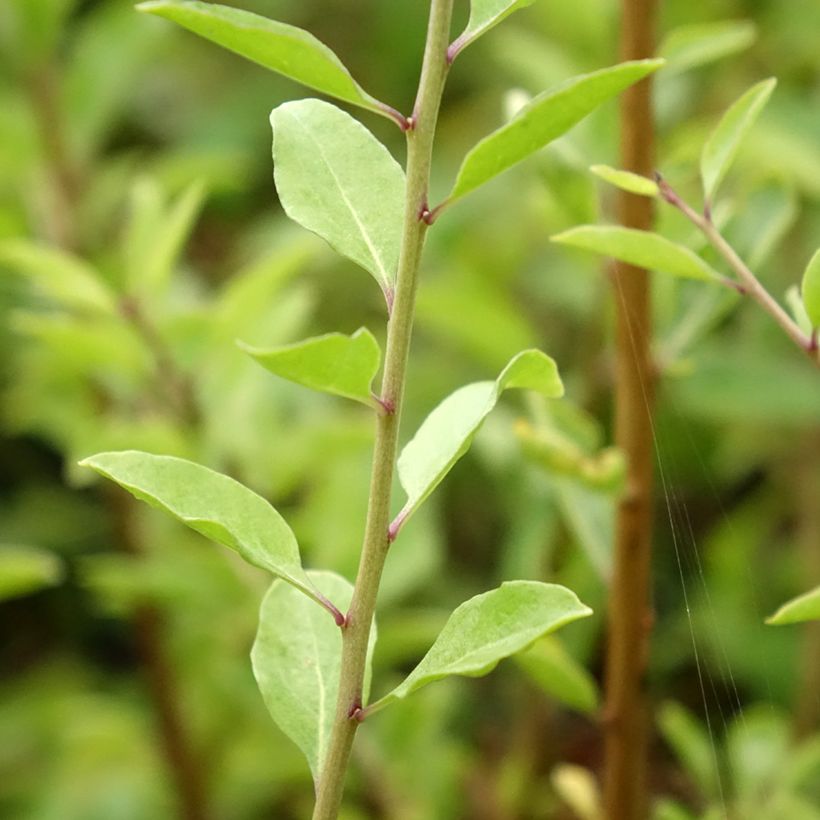



Plant habit
Fruit
Flowering
Foliage
Botanical data
Lycium
barbarum
Instant Success®
Solanaceae
Goji Berry, Wolfberry
China
Other Goji berry bush
View all →Planting and care
Goji (Lycium barbarum) prefers dry to moist, rather calcareous soils, and requires a very sunny exposure to fruit well. It is a very hardy plant, which can tolerate temperatures as low as -22 °C, but is susceptible to frost when it is still green and has not formed wood. When planting, dig a hole 50cm (19.7in) in all directions. In heavy soil, place a layer of gravel or coarse sand at the bottom of the planting hole, then add a mixture of compost, crushed horn and garden soil. This plant can be grown as a bush, in open ground or in a large pot, or can be trained as an espalier. Water regularly after planting to ensure good establishment.
While it usually takes at least two years to harvest a small crop, and four years for a full harvest, the 'Instant Success' selection produces a first small harvest in the year following planting. The plant is self-fertile, meaning it does not need the presence of a mate of the opposite sex to fruit. Goji can be attacked by powdery mildew, a microscopic fungus that forms light, whitish spots on the leaves. Young plants of the Common Goji show rapid growth in full sun, often several centimetres per week. Initially appearing to become elongated, forming sometimes deformed leaves, they grow to their final, long and slender shape. To promote branching, it can be useful to pinch the top of the plant a few centimetres below the apex. This will strengthen the plant's trunk and allow the emergence of multiple secondary branches, either at the base of the plant or at the point of pinching.
Routine maintenance: water in case of prolonged drought, once a week, abundantly. If the plant is grown in a pot, it will be necessary to water every two or three days in summer, depending on the heat and dryness. Apply organic fertilizer or well-decomposed compost once a year, in March.
Planting period
Intended location
Care
-
, onOrder confirmed
Reply from on Promesse de fleurs
Similar products
Haven't found what you were looking for?
Hardiness is the lowest winter temperature a plant can endure without suffering serious damage or even dying. However, hardiness is affected by location (a sheltered area, such as a patio), protection (winter cover) and soil type (hardiness is improved by well-drained soil).

Photo Sharing Terms & Conditions
In order to encourage gardeners to interact and share their experiences, Promesse de fleurs offers various media enabling content to be uploaded onto its Site - in particular via the ‘Photo sharing’ module.
The User agrees to refrain from:
- Posting any content that is illegal, prejudicial, insulting, racist, inciteful to hatred, revisionist, contrary to public decency, that infringes on privacy or on the privacy rights of third parties, in particular the publicity rights of persons and goods, intellectual property rights, or the right to privacy.
- Submitting content on behalf of a third party;
- Impersonate the identity of a third party and/or publish any personal information about a third party;
In general, the User undertakes to refrain from any unethical behaviour.
All Content (in particular text, comments, files, images, photos, videos, creative works, etc.), which may be subject to property or intellectual property rights, image or other private rights, shall remain the property of the User, subject to the limited rights granted by the terms of the licence granted by Promesse de fleurs as stated below. Users are at liberty to publish or not to publish such Content on the Site, notably via the ‘Photo Sharing’ facility, and accept that this Content shall be made public and freely accessible, notably on the Internet.
Users further acknowledge, undertake to have ,and guarantee that they hold all necessary rights and permissions to publish such material on the Site, in particular with regard to the legislation in force pertaining to any privacy, property, intellectual property, image, or contractual rights, or rights of any other nature. By publishing such Content on the Site, Users acknowledge accepting full liability as publishers of the Content within the meaning of the law, and grant Promesse de fleurs, free of charge, an inclusive, worldwide licence for the said Content for the entire duration of its publication, including all reproduction, representation, up/downloading, displaying, performing, transmission, and storage rights.
Users also grant permission for their name to be linked to the Content and accept that this link may not always be made available.
By engaging in posting material, Users consent to their Content becoming automatically accessible on the Internet, in particular on other sites and/or blogs and/or web pages of the Promesse de fleurs site, including in particular social pages and the Promesse de fleurs catalogue.
Users may secure the removal of entrusted content free of charge by issuing a simple request via our contact form.
The flowering period indicated on our website applies to countries and regions located in USDA zone 8 (France, the United Kingdom, Ireland, the Netherlands, etc.)
It will vary according to where you live:
- In zones 9 to 10 (Italy, Spain, Greece, etc.), flowering will occur about 2 to 4 weeks earlier.
- In zones 6 to 7 (Germany, Poland, Slovenia, and lower mountainous regions), flowering will be delayed by 2 to 3 weeks.
- In zone 5 (Central Europe, Scandinavia), blooming will be delayed by 3 to 5 weeks.
In temperate climates, pruning of spring-flowering shrubs (forsythia, spireas, etc.) should be done just after flowering.
Pruning of summer-flowering shrubs (Indian Lilac, Perovskia, etc.) can be done in winter or spring.
In cold regions as well as with frost-sensitive plants, avoid pruning too early when severe frosts may still occur.
The planting period indicated on our website applies to countries and regions located in USDA zone 8 (France, United Kingdom, Ireland, Netherlands).
It will vary according to where you live:
- In Mediterranean zones (Marseille, Madrid, Milan, etc.), autumn and winter are the best planting periods.
- In continental zones (Strasbourg, Munich, Vienna, etc.), delay planting by 2 to 3 weeks in spring and bring it forward by 2 to 4 weeks in autumn.
- In mountainous regions (the Alps, Pyrenees, Carpathians, etc.), it is best to plant in late spring (May-June) or late summer (August-September).
The harvesting period indicated on our website applies to countries and regions in USDA zone 8 (France, England, Ireland, the Netherlands).
In colder areas (Scandinavia, Poland, Austria...) fruit and vegetable harvests are likely to be delayed by 3-4 weeks.
In warmer areas (Italy, Spain, Greece, etc.), harvesting will probably take place earlier, depending on weather conditions.
The sowing periods indicated on our website apply to countries and regions within USDA Zone 8 (France, UK, Ireland, Netherlands).
In colder areas (Scandinavia, Poland, Austria...), delay any outdoor sowing by 3-4 weeks, or sow under glass.
In warmer climes (Italy, Spain, Greece, etc.), bring outdoor sowing forward by a few weeks.






























